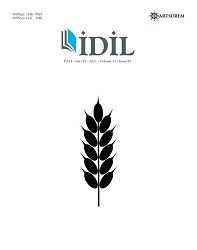THE DIFFERENCE BETWEEN DERIVATION AND INFLECTION IN TURKISH AND ITS APPLICATION TO REDUPLICATION
THE DIFFERENCE BETWEEN DERIVATION AND INFLECTION IN TURKISH AND ITS APPLICATION TO REDUPLICATION
Author(s): Oktay ÇinarSubject(s): Morphology, Lexis, Turkic languages
Published by: Sanat ve Dil Araştırmaları Enstitüsü
Keywords: Derivational morphology; inflectional morphology; reduplication; morphological typology;
Summary/Abstract: Considerations of derivation and inflection as morphological processes have long been a point of interest in morphological theorizing and generativist approach to the internal structure of words. From the typological perspective, languages employ these means to create new lexemes or change the morphological paradigm of a particular lexeme. This raises the question of how derivation and inflection work to form words: If there is any difference between derivation and inflection, what makes them different from each other? Considering this, the current study aims to question how traditional definitions apply to derivational and inflectional morphology in Turkish. Further, reduplication processes in Turkish are discussed in order to understand to what extent they apply to the distinguishing criteria offered to differentiate derivation from inflection. By doing so, the question of to what extent reduplication is represented derivationally is also raised. The results of the study suggest that not all instances of derivational and inflectional morphology can be treated equally. The analysis on the derived forms for reduplication also favor an approach which claims that difference among the morphological processes cannot be clear cut.
Journal: İdil Sanat ve Dil Dergisi
- Issue Year: 11/2022
- Issue No: 92
- Page Range: 553-563
- Page Count: 11
- Language: English

